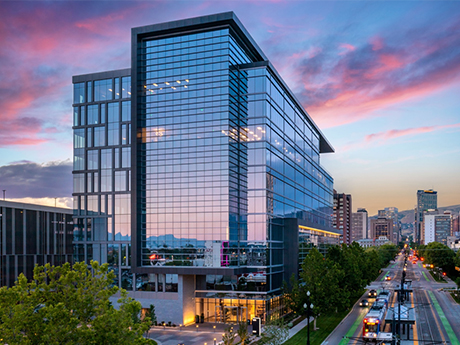— By Nadia Letey, senior vice president, CBRE —
The global office landscape has markedly changed post-pandemic. Now, amidst economic headwinds and the ongoing stabilization of return-to-office mandates, U.S. office markets like Salt Lake City are undergoing various shifts that are set to shape real estate dynamics in 2024. At the same time, Utah’s economy remains a highly desirable location to do business, in large part bolstered by an exceptionally strong talent pool.
What’s Changing: Development Slowdown Poised to Ease Supply Demand Imbalances
Salt Lake City saw a 42 percent year-over-year decrease in total office space under construction in fourth-quarter 2023, marking an all-time low. High interest rates, along with record-high vacancies, will continue to deter developers from breaking ground in the near term without significant pre-lease activity. This thinning construction pipeline will likely reduce supply side risks over the next several years as demand can be placed within second-generation space with elevated vacancy. Existing properties — especially in amenity-rich locations — will do well to attract tenants. The emphasis on creating a collaborative and inviting workspace will continue to be important to bring employees into the office.
Projects that are moving from planned to under construction are hedging their risk by requiring pre-leasing prior to breaking ground. Many have been sidelined for years or abandoned entirely. Those that are moving forward are innovative developments that integrate the increasingly popular live-work-play atmosphere. They include the Point in Draper, a highly anticipated mixed-use development encompassing everything from office space to housing and retail. However, even high-profile projects will require significant pre-lease activity to kick off any office construction.
What’s Staying Constant: Utah’s Economic Strength
While not immune from global and national economic headwinds, Salt Lake City remains one of the country’s most coveted regions to do business. Namely, the city benefits from a remarkably strong talent pool that ushers in growth across a wide range of industries. The legal and tech sectors have especially shined in recent years. Legal industry leasing activity accounted for 32 percent of the lease activity in the Central Business District (CBD) in 2022 and 15 percent in 2023. Location, quality, flexibility and amenities have all played major roles in attracting national law firms downtown, with most flocking to high-quality spaces like 95 State, 222 Main, One Utah Center, 650 Main and Second & State.
Salt Lake City has also emerged as a thriving tech hub, securing the No. 4 spot in high-tech job growth across the U.S. and Canada in 2023. At 23 percent, the region far outpaces the national growth rate of 10 percent, adding more than 11,000 high-tech jobs and 32,000 office-using jobs during 2021 and 2022. This impressive performance doesn’t appear to be fading anytime soon, either.
Salt Lake City currently ranks No. 2 for industry momentum gain – surpassed only by Austin — and ranks among the top-five resilient tech markets poised for renewed growth. Tech talent will continue to play a key role in Utah’s overall economic vitality throughout 2024 and beyond, well positioning the state to weather ongoing economic challenges.


